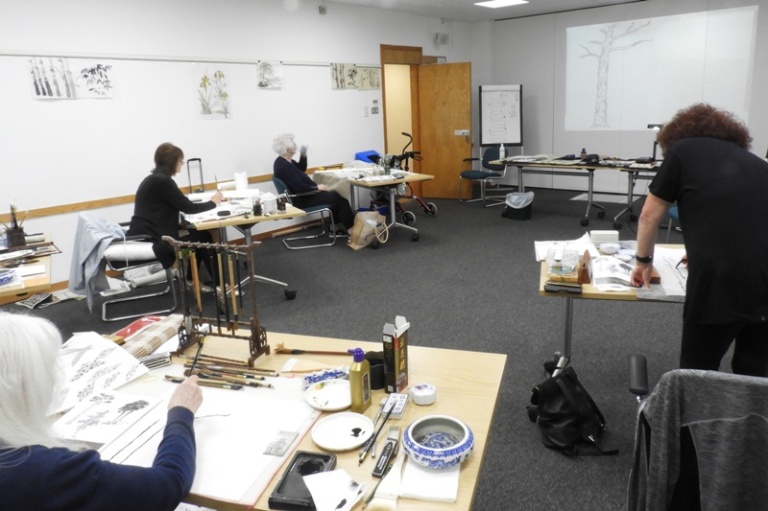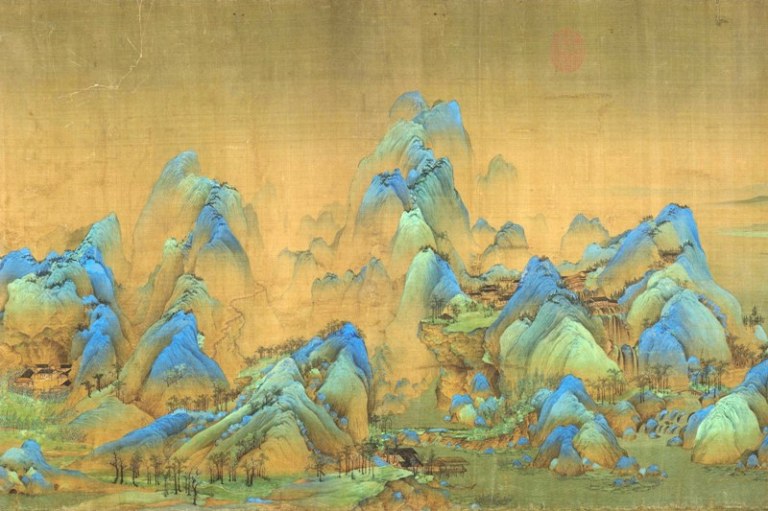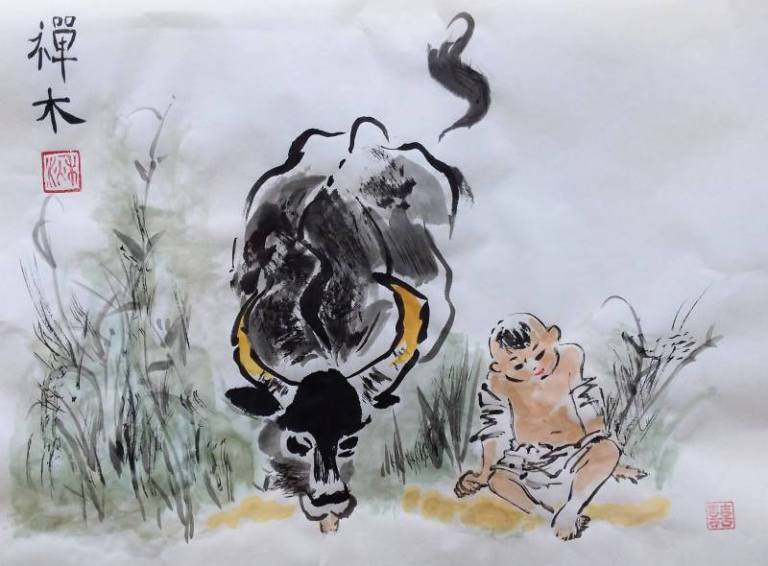Yesterday, we welcomed Leicestershire Chinese Brush Painters (LCBP) back to our first in-person workshop of 2021 in a different venue but still within the University of Leicester Botanic Gardens. It was fantastic to be back and to see people in 3D rather than just via a screen. I have really missed you all!
Anyway, with this being the first workshop I thought it was a good opportunity for us to go back to our classical roots (oh dear) and look at trees in Autumn (especially as we have so many fantastic examples in the Botanic Gardens). Here is a prime example of the Botanic Gardens as it was yesterday, which Claire reminded me was perfectly in keeping with Remembrance weekend as the dropped Acer leaves do indeed look like a sea of poppies:

We worked our way through building up our own Autumn trees and I wanted to share some further examples, both to bolster what I was talking about, but also to enhance your homework. I am reminded that there are some great examples in the Mustard seed garden manual. Below are two examples of a tree without its foliage along with another which is classically made up of dots for all those pointillists out there:

The next example is related to how trees are portrayed in classical paintings and the stories in them. I talked briefly about Twin Pines which is one of Zhao Mengfu’s (1254-1322) most famous paintings (painted ca. 1310). A little research will deliver this on the web. However, I thought I would post up probably a lesser known example of Ni Zan’s (1301-1374) Autumn Trees, which I favour:

The next example of classical trees in Autumn comes from Wang Meng, considered to be one of the Four Masters of the Yuan Dynasty (ca. 1308-1385). He was a maternal grandson of Zhao Mengfu:

The final painting I wanted to share is a classic by Guo Xi (1020-1098), Old Trees Level Distance. Note the fabulous knots in the tree trunks along with minimal lines making up such expressive trees:

Here’s hoping this inspires you to place trees at the centre of your paintings. Do post back your inspirations.
Happy Painting,
Paul



































